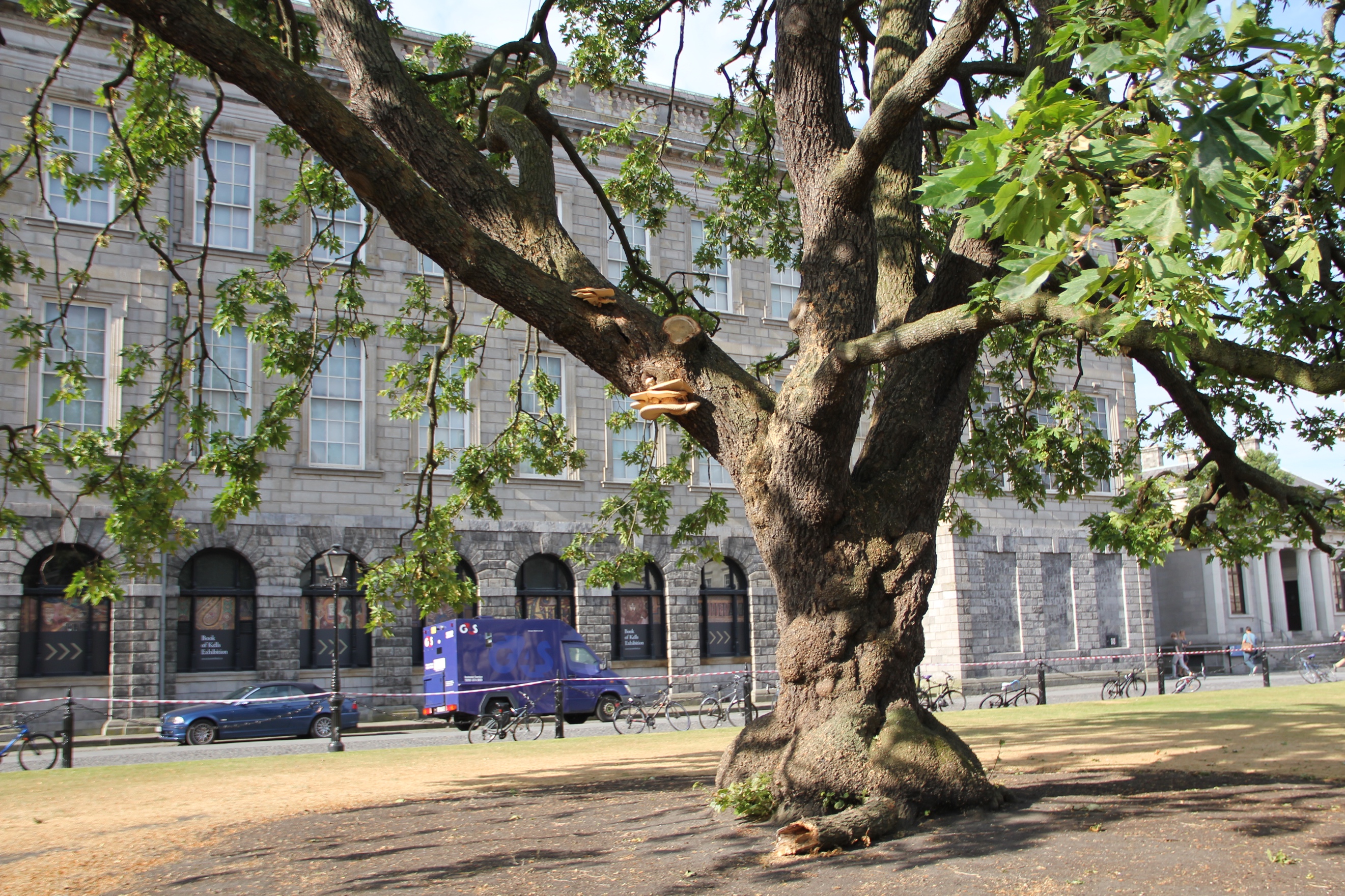Trinity has decided on a species of tree to replant in Library Square following the removal of the two Oregon Maples which used to occupy the square.
In an email sent to all staff and students, Chair of the Grounds and Gardens Advisory Committee John Parnell said that panel convened and chaired by the Provost Patrick Prendergast had decided to replant the square with two Gingko Biloba trees.
The group was made up of “a wide spectrum of people of diverse backgrounds and interests including botanists, horticulturalists and an architectural historian.” They aimed to find a species for replanting “that was long-lived, preferably deciduous, had good Autumn colour, was not too large to take away from the architecture of the square, around which a strong academic story could be built and which was likely to do well given likely predictions for climate change”.
Their choice was the Gingko Biloba, a plant native to only a small area of Eastern China, which is symbolic to multiple religions. In China, the tree is sometimes called “Silver Apricot” due to the colour of its fruit, which is used in Japanese, Korean, and Chinese cuisine, as well as for medicinal purposes. It is also a remarkably resilient species, “resistant to disease, to air pollution, and to fire”. Some trees standing within 1500 metres of the hypocentre of the Hiroshima bomb site survived. The oldest Ginkgo Bilobas can live for up to 1000 years.
The tree is dioecious, meaning the male and female reproductive organs grow in separate individual trees, and the college has decided to plant one of each sex in Library Square, each of which will be between 4.5 and 5 metres tall.
The trees which the college is replacing are the two Oregon Maples, one of which fell unexpectedly in the summer of 2018. The second tree was removed shortly after for fear that it too would fall. Both trees had shown signs of decay, and while it was unclear what exactly made the 170 year-old tree fall, Parnell stated at the time that the “probable cause” was warm weather.
The search for a new species with which to replant the square began in September 2018, as the ground below the square was surveyed to narrow down the selection process.
Other details in today’s email included information about the replacement of the “very poor and difficult to maintain” lawn around the chemistry building with wildflower meadows, as well as the removal of “obvious visible improvements” made to the greenery around the West End of campus. Also mentioned was the beginning of the process of changing a large area of the Santry Demesne from rough grassland to a wildflower meadow.






